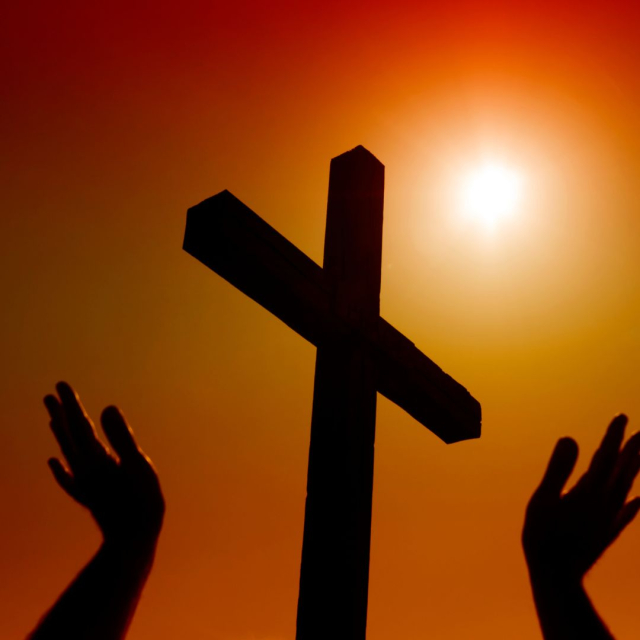The Lord of Muruhuay is one of the most important religious devotions in Peru, particularly in the Andean region. This cult is deeply rooted in the community of Acobamba, in the province of Tarma, department of Junín.
Origin and legend of the Lord of Muruhuay
The cult of the Lord of Muruhuay is linked to an image of the crucified Christ that, according to tradition, appeared miraculously on a rock in the 17th century. Legend has it that, during the Spanish colonization, a group of Quechua Indians, forced to work in extreme conditions in the mines and farms, found refuge in the mountains of Acobamba. There, seeking relief from their suffering, they began to pray in front of a rock that projected a figure similar to that of the crucified Christ.
Over time, this image gained fame for the miracles attributed to it. The rock, which was initially a spiritual refuge for local inhabitants, was transformed into a place of pilgrimage. The Catholic Church, realizing the importance of this religious phenomenon, decided to legitimize the cult, building a chapel on the site and promoting syncretism between indigenous beliefs and the Christian faith.
Religious syncretism
The Lord of Muruhuay is a clear example of the religious syncretism that characterizes many Andean devotions. Although the image of Christ crucified is part of the Christian tradition, the fact that his original representation is linked to a rock connects directly with indigenous beliefs. For Andean cultures, rocks, mountains and other elements of nature have a deep spiritual meaning and are associated with the apus, protective spirits of the mountains.
In this way, the Lord of Muruhuay not only represents the Christian faith, but also the continuity of ancestral Andean traditions. This syncretism has allowed the cult to endure over the centuries, adapting to the cultural and social changes of Peru.
The festival of the Lord of Muruhuay
Every year, between the months of May and June, thousands of pilgrims from different parts of Peru and the world gather in Acobamba to celebrate the festival of the Lord of Muruhuay. This celebration is an event that combines religious fervor, cultural expressions and social activities.
The processions
One of the most important moments of the festivity is the processions. The image of the Lord of Muruhuay, which is currently on an altar inside the sanctuary, is carried on a platform through the main streets of Acobamba. The faithful, many of them dressed in traditional costumes, accompany the procession praying, singing and throwing flowers as the image passes by.
The processions are not only an act of devotion, but also an opportunity for communities to express their cultural identity. Traditional dancers and musicians play a key role, bringing colour and joy to the celebration.
The offerings and promises
Pilgrims who visit the sanctuary often leave offerings such as candles, flowers, and food, as a sign of gratitude for the favors received. It is also common for people to make promises to the Lord of Muruhuay, committing to perform acts of faith, such as walking barefoot or participating in community activities, in exchange for his intercession.
Gastronomy and fairs
The Lord of Muruhuay festival is also an opportunity to enjoy the region's rich gastronomy. Typical dishes such as pachamanca, cuy chactado and rocoto relleno are the stars of the food fairs organised around the celebration. In addition, craft fairs allow visitors to purchase textiles, ceramics and other products made by local communities.
The sanctuary of the Lord of Muruhuay
The sanctuary of the Lord of Muruhuay is a place of great spiritual and architectural importance. Located more than 3,000 meters above sea level, it offers a breathtaking view of the Peruvian Andes. The current church, built in the 20th century, combines elements of colonial architecture with Andean influences, reflecting the syncretism that characterizes the cult.
The main altar, where the image of the Lord of Muruhuay is located, is the main point of worship. However, many pilgrims also visit the original rock, which is still preserved within the sanctuary and is considered a sacred object.
Cultural and social impact
The Lord of Muruhuay is not only a religious figure, but also a symbol of identity and community cohesion. His cult has contributed to strengthening social ties between the inhabitants of Acobamba and neighboring communities, promoting values such as solidarity and reciprocity.
In addition, the festival attracts thousands of tourists every year, generating a significant economic impact on the region. Income from religious tourism has allowed for improvements to local infrastructure and fostered the development of related economic activities, such as trade and crafts.
The Lord of Muruhuay is much more than a religious devotion; he is a symbol of the cultural and spiritual resistance of Andean communities. His history, marked by syncretism and miracles, has made him one of the most genuine expressions of popular faith in Peru.
For those seeking an experience that combines faith, culture and tradition, the Lord of Muruhuay festival is a unique opportunity to connect with the spiritual and cultural richness of the Peruvian Andes. This cult, which has survived through the centuries, remains a living testimony of the fusion between the ancestral and the modern, the human and the divine.
